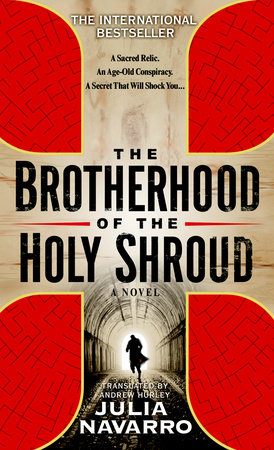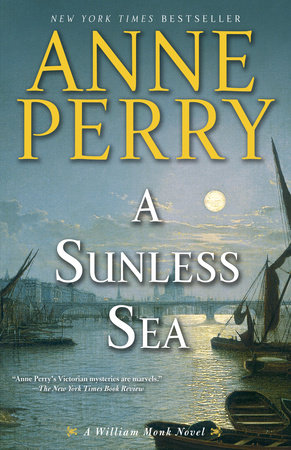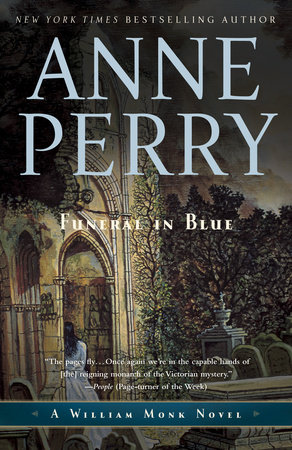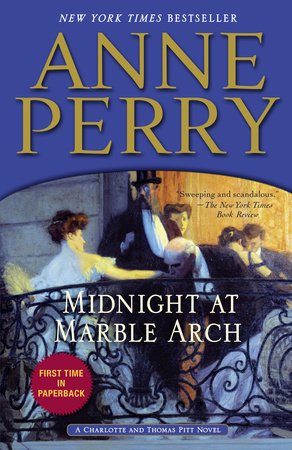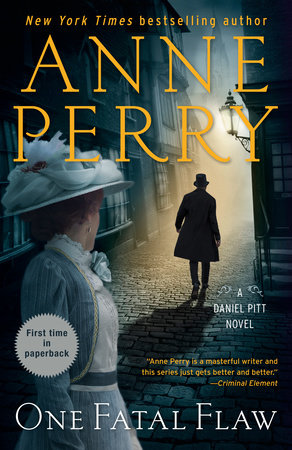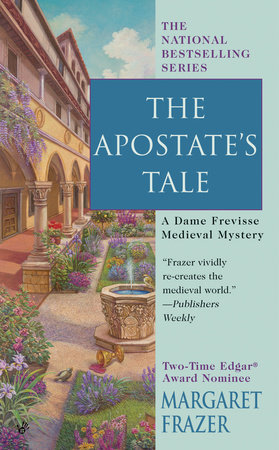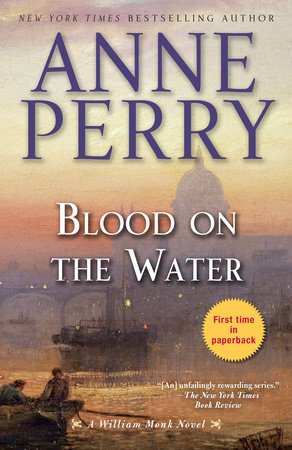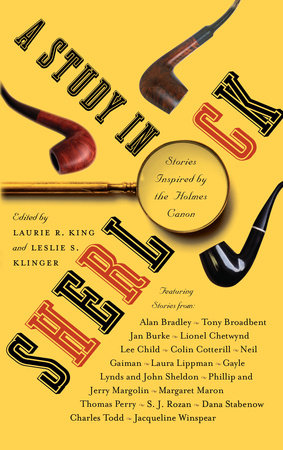What prompted your interest in the Shroud of Turin?
It was due to a coincidence. I had never been especially interested in the Shroud of Turin. But one summer I was with my son at the beach, and, as I always do while he swims, I read newspapers. We had been at the beach for a few hours, and I had already reviewed a dozen newspapers. I was bored, so I began to reread them, and that was when I came upon the obituary of an acquaintance, Walter McCrone, a forensic expert who had analyzed the Shroud of Turin. Next to this obituary was a small article recapping the history of the debate about the Shroud’s authenticity. It was this small article that ignited my imagination and I started to think about writing a novel. So The Brotherhood of the Holy Shroud is the fruit of coincidence. I am a journalist, and if not for that vacation, I would not have had the time to read the obituary. But that August I did have the time and my imagination began to fly.
Though you have written several other books, The Brotherhood of the Holy Shroud is your first novel. Why did you choose to write a novel about the shroud rather than a straight nonfiction account of this mystery?
Having had various books published on political matters, I did not feel any need to write a novel. But for the coincidence mentioned above, I might not have written this one. In any case, I probably would not have written a nonfiction account of the Shroud, because such “mysteries” are not part of what I work on in my personal and professional life.
In the book, you describe how the shroud made its way from Jerusalem at the time of Christ to what is now Turkey and ultimately to Turin. How much of that story line is based on legend, and how much is a product of your own imagination?
In my novel history is mixed with legend, because there are parts of the official history of the Shroud that belongs to the world of legend and of speculation. I found a precious story in the Apocryphal Gospels about the king Abgaro of Edesa who writes a letter to Jesus of Nazareth asking Jesus to cure him. According to the story, Jesus responds that he cannot come himself to the King, but that he will send one of his disciples. It then tells that the cloth that shrouded the dead body of Jesus came with the disciple to Edesa and this artifact cured king Abgaro of his illness. (Edesa is the present city of Urfa in Turkey.) As the tale continues, the pagan son of Abgaro persecuted his father’s converts to the new faith and the miraculous cloth was secreted away, only to be rediscovered in a niche in the city wall centuries later. It is true that the Byzantines carried the Shroud to Constantinople in 944 A.D. and that it was conserved in the church of Holy María of Blanquernas until 1204 A.D. when it disappeared. Did the crusaders bring it to France? Was it sold to Balduino, the Byzantine emperor? At that time, only the Knights Templar had the means to buy such a relic; did they? The Shroud reappeared in France in 1349 A.D. in the hands of a nobleman named Godofredo of Charny. It is also a fact that in 1453 A.D. the granddaughter of Godofredo died yielding it to the House of Saboya. With this basis, one can continue the history of the Shroud up to modern days; all I have done what have done is to fill in the gaps with imagination. In reality the Shroud suffered the consequences of the fire in the nights of December 3rd and 4th, 1532, and then later the Shroud suffered in another fire on April 13, 1997 in the Cathedral of Turin. All I have done in The Brotherhood of the Holy Shroud is mix reality into the legend, remaining faithful to history and to what documentation exists.
The plot weaves together two stories spanning 2,000 years: the history and legends surrounding the Shroud and a modern-day investigation into crimes committed at the Cathedral of Turin. Tell us what it’s like, as a writer, to immerse you in multiple worlds at one time.
Once I composed the thesis of the novel, I began to read everything that I could on the history and vicissitudes of the Shroud. I consulted with my historian friends, who guided me on which books and documents to read. I traveled to Turin, and I am lucky to have friends that live there and know the city well. Most important was the idea of the novel; once I had it clearly, all I did was to seek documentation and to work. It is very important to me that a novel is based on historical data, that I be faithful to the history. An author can place her characters in any phase of history but a writer cannot distort the actual historic period. At least that is what I believe.
Any religious thriller—especially one that involves art-related crimes, a medieval mystery and the Knights Templar, as yours does— inevitably faces comparison with The Da Vinci Code. What influence, if any, did Dan Brown’s book have on your story, your writing, or even your decision to write The Brotherhood of the Holy Shroud at this time?
When I started writing The Brotherhood of the Holy Shroud , The Da Vinci Code had not been published, at least not in Spain. When I delivered the manuscript to my publisher, he also hadn’t seen The Da Vinci Code, and therefore it did not influence my writing. And I sincerely believe that The Brotherhood of the Holy Shroud has nothing to do with The Da Vinci Code. I sincerely believe that they cannot be compared, and those who have read or will read it will immediately realize that they have nothing to do with one another. I believe that the differences are totally obvious.
Like you, the character of Ana Jiménez is a Spanish journalist. How much of you and your method of reporting are evident in her character?
There is a lot of me in Ana Jiménez, but when I described this character, she is not me. My friends and people who know me immediately see some similarities. Ana Jiménez is a journalist that pursues the truth and for this reason she faces many difficulties, but does not yield. She is pigheaded and tenacious, and I too can be described that way.
As a journalist, how difficult was it to make the transition to writing novels?
The truth is that for me it has not been a complicated transition. When I sat down to write The Brotherhood of the Holy Shroud I did it without knowing if would be published. My first reader was my husband, if he had told me that the novel would not be worthwhile I would never have delivered it to David Trias, my publisher. Even so, when I delivered it to David he was not sure that he would publish it. And when we did give him the manuscript to publish, it was without expectation that the novel would become such a success. I am very thankful to the readers because they are they the ones that have made The Brotherhood of the Holy Shroud a best seller, not only in Spain but in other many European countries.
Who are your favorite novelists, especially English-language ones, and how do you feel they have impacted your fiction writing?
My bedside book is The Odyssey, which in my opinion is the best book of adventures ever written. The Odyssey also describes an internal quest for truth, a cerebral adventure. I am an avid reader of Cervantes, of Quevedo, of Garcia Marquez, of Mujica Laínez (Bomarzo is a novel that impressed me) of Vargas Llosa, Umberto Ecco, Dostoevsky, Tolstoy, Alexandre Dumas, Gustave Flaubert. In English, I read Coetzee, Philip, Roth, Doris Lessing, Robert Graves, Thomas Mann, Malcolm Lowry, Scott Fitzgerald, and of course, Salinger. I am a compulsive reader. I can not imagine myself without a book close by, and for me there is nothing like reading; to read and to travel is what I prefer more than anything else. Reading is to dream, to reflect, and to know….
What is the status of the film that is to be based on your book? How involved are you in adapting the novel for the screen? Is the film scheduled for U.S. release, and if so, when?
I know that they are finishing to work on the screenplay, and they have not involved me because I sold the rights of the novel.
How has your own religious experience influenced this novel and the two others you are already working on?
I try to deal with religion with great respect and independently of my own beliefs. I have had no problem with the Roman Catholic Church. In any case, The Brotherhood of the Holy Shroud is not a religious novel: it is a novel of adventure, of mystery, that has the objective to entertain but I believe that also result in some readers reflection on fanaticism, and on the hidden powers that moves society; when I refer to "hidden powers" I refer to "economic powers.”
Tell us about your next novel, The Bible of Clay.
The Bible of Clay is my second novel and it is set in Mesopotamia during the time of the Patriarch Abraham, as well as in the Europe leveled by Nazism, especially in Berlin and Mahaussen, and also in present day in the months prior to the war in Iraq. It is also a novel of adventure and mystery; it invites readers to reflect on the war and the business of war; it is true that there are many who have benefited materially from the current war in Iraq. Some of these newly rich people are those who see the economic advantage of a war without seeing the suffering and pain it may bring. This novel too has become a best seller thanks to European and Spanish readers and I trust that when it is published in the United States, it will be similarly popular. It is my great hope that my novels will published in the United States. In a few months my third novel, The Blood of an Innocent, will be published in Spain, and I am already thinking about a fourth… But first I am impatient to know if The Brotherhood of the Holy Shroud pleases American readers. I hope so!
